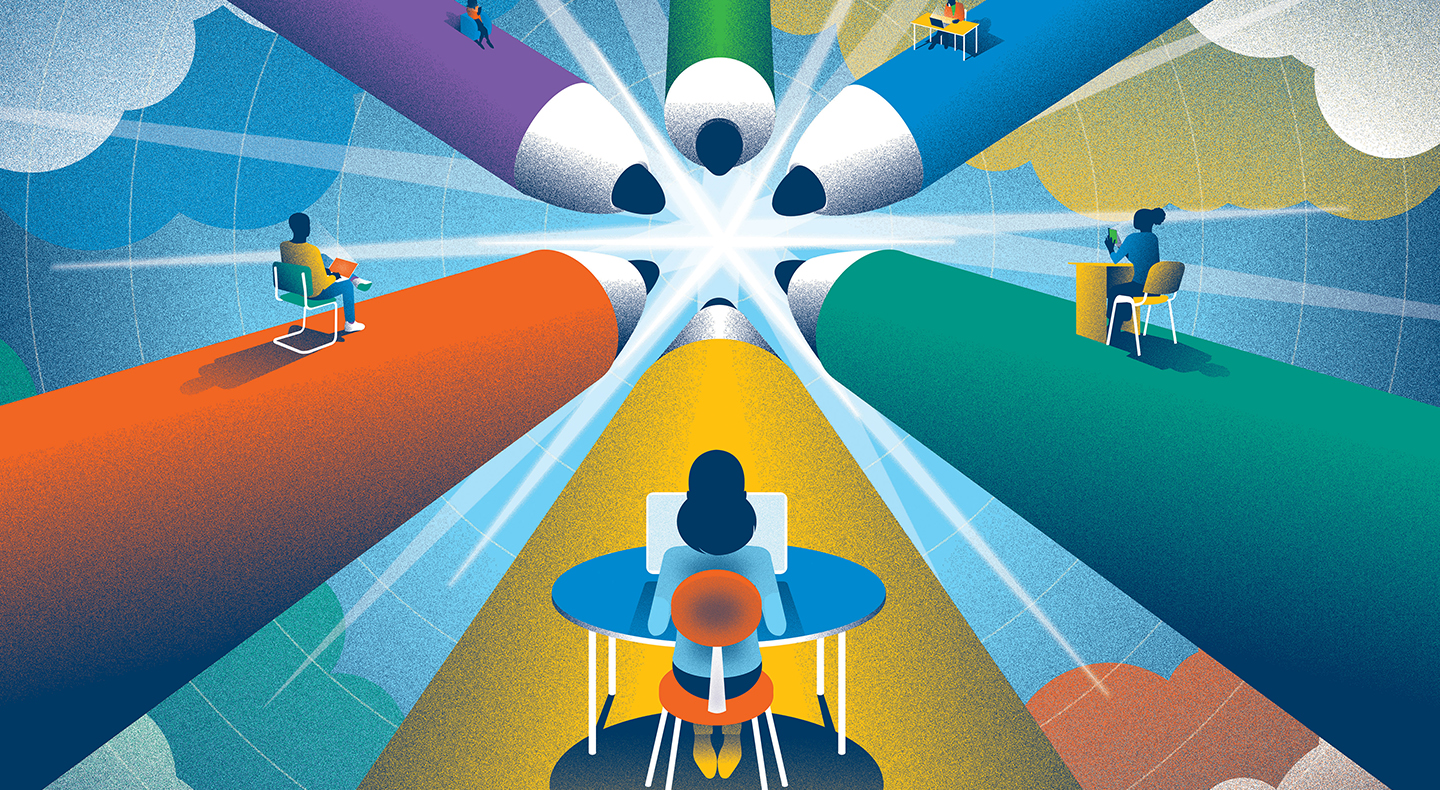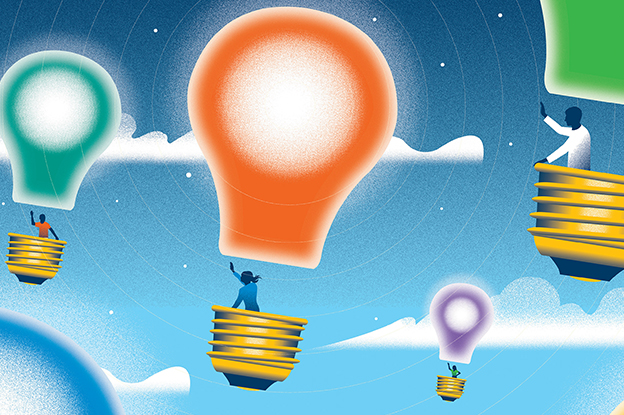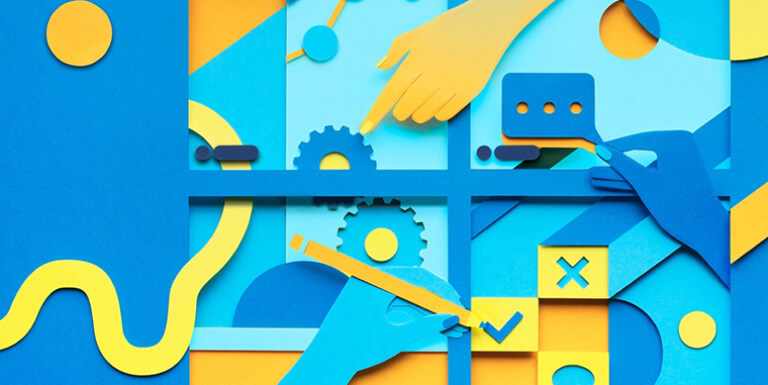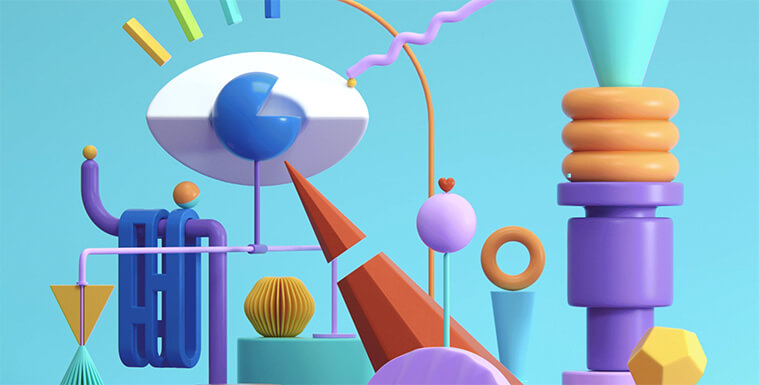
Creativity doesn’t happen in a vacuum . The myth of the solo genius hatching brilliant ideas from a lonely lab is more the stuff of Hollywood invention. But in a year when brainstorming sessions together in person simply haven’t been an option, group collaboration has required a serious rethink.
“We noticed right away that when everyone is remote, there are different dynamics,” says Jared Spataro, corporate vice president for Modern Work. “How do you now do your whiteboarding? How do you do your storyboarding? How do people contribute?”
For all of the advancements made in remote work options and enhanced digital tools this last year, learning to create together when you can’t be together has been more elusive. Also challenging: finding the space to tap into your creativity, whether as an individual or as a group, which even under normal circumstances is hard work. How do you find your genius, let alone break it free, in challenging times?
At Microsoft, that started with going back to the drawing board, almost literally. The in-person whiteboarding experience that has been a crucial tool for brainstorming in meetings since the 1960s had to expand as a virtual product, which meant turbocharging Microsoft’s Whiteboard app.
“When you lose 70 percent of nonverbal cues, as we did by going remote, you need to re-create your tools to allow for the human part of communication,” says Kamal Janardhan, who as general manager for Insights at Microsoft works to improve how employees interact. Whiteboarding, she says, helps remote users connect in ways that are deeper and faster than just reading or hearing words. “Drawing a picture taps a much lower brain reaction and helps build a relationship quicker,” she says. “You connect differently when you see someone’s hand-drawn design come across your screen.”
Over the last year, Microsoft introduced new features for Whiteboard, like Sticky Notes, which allow customers to quickly add ideas and feedback to the canvas, and the ability to add text objects from the toolbar whether users are in Seattle or 2,000 miles away. The same with selecting and reordering objects on the canvas, another pandemic innovation.
“True innovation isn’t about inventing new products as much as responding to human needs—our own, and one another's.”
That connection—and rapid form of communication—is key to the creative process, which can often generate its share of doubt and failure. “Creativity is messy. You don’t want it to be hemmed in and rigid. But when it’s messy, it gets scary. So how do you survive that?” asks Amy Wallace, coauthor of Creativity, Inc. , the New York Times–bestselling book that chronicles the culture of Pixar, an icon of the creative workplace, under the leadership of cofounder Ed Catmull.
Pixar’s answer: Build a brain trust. Over the course of an average three-year project, teams meet every few months to give one another feedback. Comments can be devastatingly frank and may force people to throw out weeks’, or even months’, worth of work. But Pixar differs from much of Hollywood in that “no one tells you how to fix it,” Wallace says. “That allows creativity to really flourish.” It also allows everyone to have a voice. While even three months may feel like a long horizon for a project these days, it’s worth asking yourself: Who is in your brain trust? Whose opinions do you value when you’re stuck on a particularly hard innovation challenge?
And one of the unexpected advantages that has emerged in our new reality is voices can be easier to hear in a hybrid setting. “When everyone’s in the room, there’s a hierarchy that gets created, and even if it’s unspoken, you’re distracted by it,” says Microsoft’s Janardhan. “But when everyone’s remote, people feel freer to contribute and less intimidated. So junior members of a team or new hires, let’s say, are likelier to contribute to a session if they’re doing it from home than if they’re in a conference room with a pen in their hand in front of a group. That’s really useful in getting everyone to participate.”
Whiteboard can flatten the playing field among collaborators in unexpected ways. When Microsoft surveyed users last spring to ask which types of meetings made them feel most included, more users chose “when everyone is remote” than in-person meetings or a hybrid meeting with attendees in person and remote.

Illustration by Neil Webb
Take Microsoft customer Accenture, a Fortune 500 consulting firm with half a million employees worldwide, as an example. Accenture trained its teams how to use Whiteboard to improve remote collaboration and facilitate deeper insights even with consultants shut in at home. Teams no longer needed to be clustered in person to A/B test a new concept, brainstorm a list of product names, or doodle new packaging designs.
Along with Teams Calling, audio conferencing, and video meetings, Whiteboard was “the critical piece of our response to COVID-19,” reports Stuart Brown, managing director—Microsoft Business Group at Accenture. “It was by far the most important way to maintain continuity with our clients and with our people, period.”
Taking a Risk
Being free to offer ideas in real time is a kind of creativity that can feel risky, but that’s necessary, according to many of the 32 famous subjects (including director Francis Ford Coppola, writer Amy Tan, and oceanographer Sylvia Earle) writer Michael Shapiro profiled in his book The Creative Spark . “Taking chances might be about brainstorming without editing,” Shapiro says. “The majority of ideas might not go anywhere. But if you kill that one idea that might be great before it gets a chance to be considered, you’re not doing yourself or anyone else any favors.”
That’s not always easy in the modern workplace, with so many responsibilities and distractions pulling at our attention. As author Pico Iyer told Shapiro, “You go to an airport, there are all these places to recharge our devices, but in our society there are fewer and fewer places to recharge ourselves.” Iyer has the good fortune to regularly visit a Benedictine hermitage on California’s Big Sur coast to walk and to sit with himself. That’s not possible for most of us, but small steps—like actually scheduling time to step away from your desk and your devices—can provide that space to reflect and channel maybe just a little inner creativity.
“One of the unexpected advantages that has emerged in our new reality is voices can be easier to hear in a hybrid setting.”
It speaks to one of the key insights of working during these challenging times: True innovation isn’t about inventing new products as much as responding to human needs—our own, and one another’s. “One of the best things I’ve personally learned about creativity from this pandemic is don’t try and take the old and replicate it with a new medium, but rather think about what’s the magic for people and how can we bring that spark to a new environment,” says Spataro, who adds that in many ways, COVID helped prompt creative solutions that might not have occurred otherwise.
Based in London, the health care analytics company Dr Foster, a subsidiary of Telstra Health, needed to make huge datasets available this year to multiple teams as part of a vital effort to facilitate more COVID-19 test results. Relying on Microsoft’s SQL Server 2019 Big Data Clusters provided the speed and rigorous data protection Dr Foster required. But it was Whiteboard that helped the people behind the data stay aligned and creative when COVID-19 forced a lockdown. The company continues to meet via Microsoft Teams, using the Whiteboard to collaborate. “The transition to working at home has been much easier because of our Teams usage,” says George Bayliffe, Dr Foster’s head of data.
By putting people over products and creativity over “deliverables,” even a crisis as big as the coronavirus could be a spur rather than an obstacle. “Every day we’re seeing people riff off each other creatively, in really amazing ways,” says Spataro, “sometimes at a higher bandwidth and in more productive ways than what I saw in the old days.” Creativity can be developed like any other skill, even if we’re not together. And once it is, it can be a boon to both individual careers and companies.

